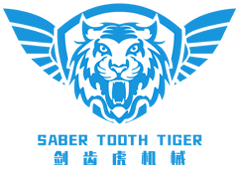21
2025
-
07
The Future of Electrical Equipment Manufacturing: CNC Busbar Solutions
The Future of Electrical Equipment Manufacturing: CNC Busbar Solutions Introduction to CNC Busbar Solutions The electrical equipment manufacturing industry is undergoing a significant transformation with the advent of **CNC busbar solutions**. These innovative technologies are redefining how manufacturers produce and assemble electrical components. By integrating computer numerical control (CNC)
The Future of Electrical Equipment Manufacturing: CNC Busbar Solutions
Introduction to CNC Busbar Solutions
The electrical equipment manufacturing industry is undergoing a significant transformation with the advent of **CNC busbar solutions**. These innovative technologies are redefining how manufacturers produce and assemble electrical components. By integrating computer numerical control (CNC) systems into the busbar manufacturing process, companies can achieve unprecedented levels of precision, efficiency, and customization.
CNC busbar solutions allow for the automation of processes traditionally performed manually, resulting in faster production times and reduced labor costs. This article explores the future of electrical equipment manufacturing, focusing on the benefits, applications, and innovations associated with CNC busbar technologies.
Understanding CNC Busbar Technology
CNC busbar technology encompasses a range of processes used to manufacture busbars, which are conductive bars used for distributing electric power. These bars are critical components in various electrical systems, serving as connectors in switchgear, transformers, and power distribution boards.
What is a Busbar?
A busbar is a metallic strip or bar that serves as a junction point for electrical circuits. Typically made from copper or aluminum, busbars are designed to conduct electricity efficiently while minimizing energy loss. Their primary functions include:
- Distributing electrical power
- Providing a common connection point for multiple circuits
- Enhancing the reliability of electrical systems
The Role of CNC in Busbar Manufacturing
**Computer Numerical Control (CNC)** technology automates the manufacturing process, allowing for precise cutting, bending, and shaping of busbars. CNC machines operate based on pre-programmed software, enabling manufacturers to produce intricate designs with high accuracy. Key benefits of using CNC in busbar manufacturing include:
- **Increased Precision**: CNC machines can achieve tolerances of a few thousandths of an inch, ensuring that busbars meet exact specifications.
- **Efficiency**: Automation reduces production time and minimizes human error, leading to faster turnaround times for manufacturing projects.
- **Customization**: CNC technology allows for the easy modification of designs, enabling manufacturers to create bespoke solutions for specific applications.
Benefits of CNC Busbar Solutions in Manufacturing
Integrating CNC busbar solutions into the manufacturing process offers numerous advantages that can revolutionize the electrical equipment industry.
Enhanced Production Efficiency
CNC busbar systems streamline the production process. The automated nature of CNC machines ensures that tasks are completed faster without compromising quality. This enhanced efficiency translates to higher output levels and improved profitability for manufacturers.
Improved Product Quality
With CNC busbar solutions, manufacturers can achieve a level of precision that is difficult to replicate with manual methods. High-quality busbars lead to improved performance in electrical systems, reducing the likelihood of failures and enhancing customer satisfaction.
Cost Reduction
While the initial investment in CNC technology may be significant, the long-term cost savings can be substantial. Reduced labor costs, decreased material waste, and lower error rates contribute to overall savings for manufacturers.
Flexibility and Customization
CNC busbar solutions allow manufacturers to adapt quickly to changing market demands. With the ability to easily reprogram machines for different designs, companies can offer tailored solutions to meet specific customer needs.
Applications of CNC Busbar Solutions
CNC busbar solutions find applications across various sectors, including:
Power Distribution
In power distribution systems, busbars act as critical components for connecting transformers, switchgear, and other electrical devices. CNC technology enables manufacturers to produce busbars with complex geometries that optimize space and enhance performance.
Renewable Energy Systems
The rise of renewable energy sources has increased the demand for efficient electrical distribution systems. CNC busbar solutions can be used in solar inverters, wind turbine systems, and energy storage solutions, ensuring effective power management and distribution.
Industrial Automation
CNC busbars play a vital role in industrial automation by facilitating reliable connections in machines and control panels. The precision and reliability offered by CNC technology contribute to the overall efficiency of automated systems.
Telecommunications
In telecommunications, busbars are essential for connecting various components within data centers and telecommunication networks. CNC busbar solutions ensure that connections are reliable, reducing the risk of downtime and service interruptions.
The Future Trends in CNC Busbar Manufacturing
As technology continues to evolve, several trends are shaping the future of CNC busbar manufacturing.
Integration with IoT and Smart Technologies
The integration of **Internet of Things (IoT)** technologies into manufacturing processes is gaining momentum. CNC busbar solutions can be connected to IoT systems for real-time monitoring, predictive maintenance, and data analytics, leading to enhanced operational efficiency.
Adoption of Advanced Materials
The development of new materials is impacting busbar manufacturing. Lightweight and conductive materials, such as advanced alloys and composites, are being explored to improve performance and reduce costs.
Sustainability Initiatives
As industries focus on sustainability, manufacturers are looking for ways to minimize their environmental impact. CNC busbar solutions can contribute to sustainability efforts through reduced material waste, energy-efficient production processes, and the use of recyclable materials.
Challenges in Implementing CNC Busbar Solutions
While CNC busbar solutions offer significant advantages, manufacturers may face challenges during implementation.
High Initial Investment
The cost of acquiring CNC machinery and training personnel can be daunting for some manufacturers. However, the long-term benefits often outweigh these initial costs.
Skill Gap and Training Requirements
Implementing CNC technology requires a skilled workforce capable of operating and programming complex machines. Companies must invest in training programs to ensure employees are equipped to handle these advanced systems.
Maintenance and Upkeep of CNC Equipment
CNC machines require regular maintenance to ensure optimal performance. Manufacturers must establish maintenance schedules and practices to minimize downtime and extend the life of their equipment.
Conclusion
The future of electrical equipment manufacturing is bright, with CNC busbar solutions at the forefront of this transformation. By leveraging the precision, efficiency, and flexibility offered by CNC technology, manufacturers can meet the demands of an ever-evolving industry. As we continue to embrace advancements in technology, CNC busbar solutions will play a crucial role in shaping the landscape of electrical equipment manufacturing for years to come.
FAQs
1. What is a busbar used for in electrical systems?
A busbar is used to distribute electrical power and serve as a connection point for multiple circuits within electrical systems.
2. How does CNC technology improve busbar manufacturing?
CNC technology enhances busbar manufacturing by providing increased precision, efficiency, and customization, leading to higher quality products.
3. What are the main benefits of CNC busbar solutions?
Key benefits include enhanced production efficiency, improved product quality, cost reduction, and flexibility in manufacturing.
4. In which industries are CNC busbar solutions commonly used?
CNC busbar solutions are commonly used in power distribution, renewable energy systems, industrial automation, and telecommunications.
5. What challenges do manufacturers face when implementing CNC busbar solutions?
Challenges include high initial investment costs, the need for skilled labor, and the maintenance requirements of CNC equipment.
Related news





